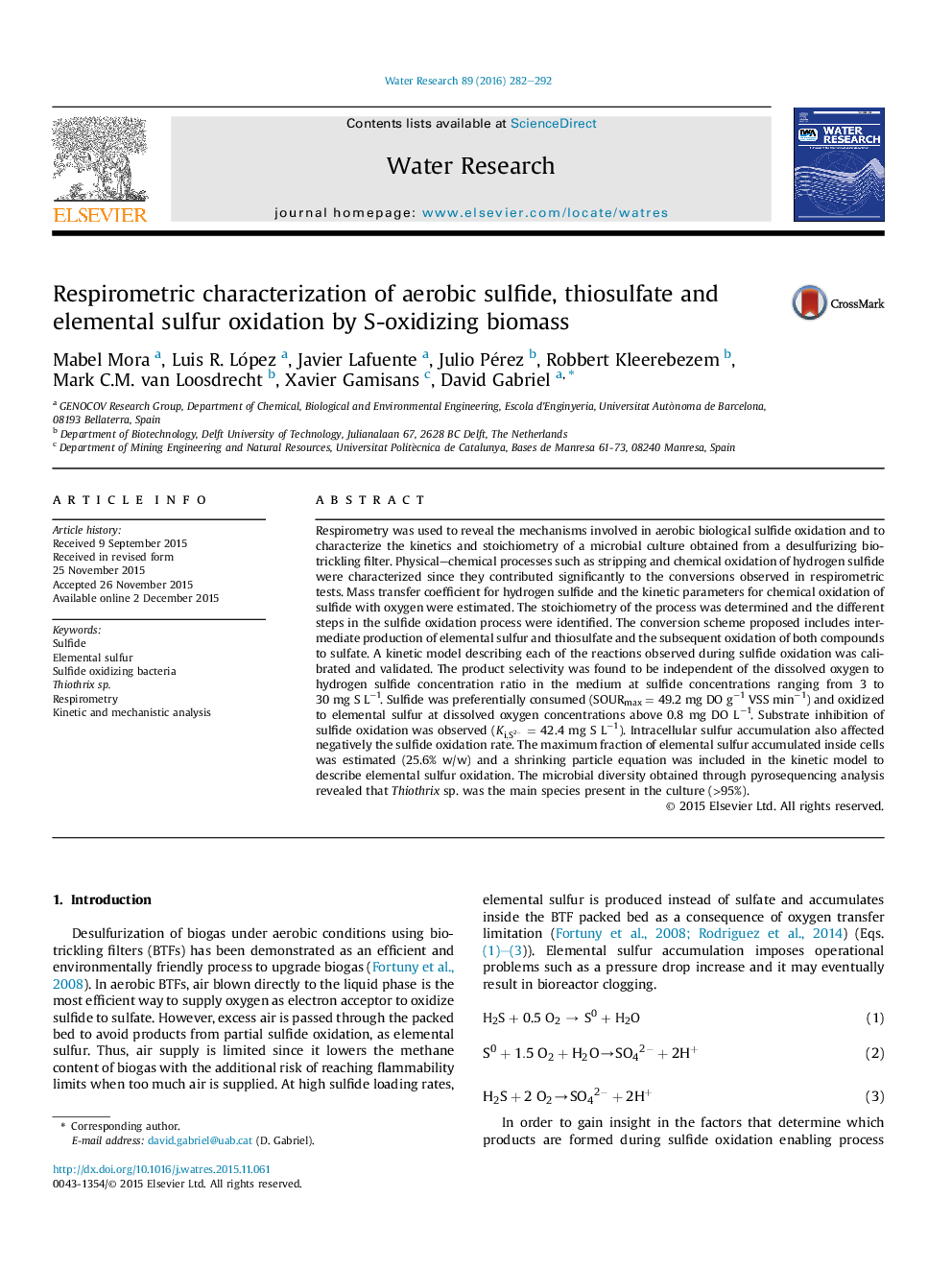| کد مقاله | کد نشریه | سال انتشار | مقاله انگلیسی | نسخه تمام متن |
|---|---|---|---|---|
| 4481040 | 1623079 | 2016 | 11 صفحه PDF | دانلود رایگان |

• LFS respirometry allowed characterizing immobilized SOB from a desulfurizing BTF.
• SOB oxidized preferentially sulfide with a SOURmax of 49.2 mg DO g−1 VSS min−1.
• A shrinking particle model was used to describe elemental sulfur oxidation.
• Sulfide oxidation was completely inhibited at 25.6% of intracellular sulfur stored.
• Thiosulfate and elemental sulfur were the intermediates produced during S2− oxidation.
Respirometry was used to reveal the mechanisms involved in aerobic biological sulfide oxidation and to characterize the kinetics and stoichiometry of a microbial culture obtained from a desulfurizing biotrickling filter. Physical–chemical processes such as stripping and chemical oxidation of hydrogen sulfide were characterized since they contributed significantly to the conversions observed in respirometric tests. Mass transfer coefficient for hydrogen sulfide and the kinetic parameters for chemical oxidation of sulfide with oxygen were estimated. The stoichiometry of the process was determined and the different steps in the sulfide oxidation process were identified. The conversion scheme proposed includes intermediate production of elemental sulfur and thiosulfate and the subsequent oxidation of both compounds to sulfate. A kinetic model describing each of the reactions observed during sulfide oxidation was calibrated and validated. The product selectivity was found to be independent of the dissolved oxygen to hydrogen sulfide concentration ratio in the medium at sulfide concentrations ranging from 3 to 30 mg S L−1. Sulfide was preferentially consumed (SOURmax = 49.2 mg DO g−1 VSS min−1) and oxidized to elemental sulfur at dissolved oxygen concentrations above 0.8 mg DO L−1. Substrate inhibition of sulfide oxidation was observed (Ki,S2−Ki,S2− = 42.4 mg S L−1). Intracellular sulfur accumulation also affected negatively the sulfide oxidation rate. The maximum fraction of elemental sulfur accumulated inside cells was estimated (25.6% w/w) and a shrinking particle equation was included in the kinetic model to describe elemental sulfur oxidation. The microbial diversity obtained through pyrosequencing analysis revealed that Thiothrix sp. was the main species present in the culture (>95%).
Figure optionsDownload high-quality image (181 K)Download as PowerPoint slide
Journal: Water Research - Volume 89, 1 February 2016, Pages 282–292